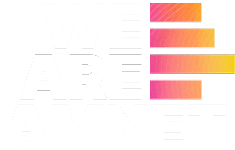In the fast-paced sector of retail and FMCG marketing, scaling creative output is not just a strategic imperative but a critical necessity for staying competitive. As these industries experience constant shifts in consumer preferences, an increase in the channels demanding content, and uncertain market trends, the challenge of maintaining a high creative output to meet evolving demands whilst allowing space for the creative process takes center stage.
Luckily, We Are Amnet is here to dissect the challenges that specifically impact creative scalability. Moreover, we’ll provide industry-tailored strategies to overcome these challenges, emphasizing the importance of striking the right balance between creativity and consistency.
As we navigate through the complexities of the retail and FMCG industry, this post will serve as a practical guide for businesses aiming not only to expand their creative output but also to establish an enduring connection with their dynamic customer base.
Fast Moving Consumer Goods: The Top Five Challenges in Scaling Creative Output
In the dynamic landscape of FMCG and retail marketing, scaling creative output is imperative for several reasons. It means meeting the demand for a consistent and engaging brand presence across diverse channels, capturing the attention of a broad consumer base. Moreover, as the digital realm expands, the need for a robust online presence demands an increased volume of creative assets.
Maintaining Quality at Scale
Scaling any creative project often introduces a significant challenge – the risk of compromising quality in the pursuit of quantity. Growing from a team comprised of a few people to teams of multiple creative people leads to pressure to produce a higher volume of content. This may undermine the meticulous creative processes and the time that can be allocated to ensure top-notch results.
To counter this, a robust quality control system is essential. Enforcing style and tone of voice guidelines ensures a cohesive and consistent identity across all creative assets, even amidst increased production demands. Investing in the professional development of creative staff is another vital solution. Through training programs and skill enhancement initiatives, teams can adapt to the demands of scaling without sacrificing their creative work.
Moreover, understanding the nuances between creating content regionally and localizing centralized content adds another layer of complexity. It’s crucial to strike a balance that ensures cultural relevance while maintaining a cohesive brand identity.
Exploring tools or models that can automate or streamline repetitive tasks can alleviate the burden on your teams, allowing them to focus on the creative journey. If implemented correctly, your business or marketing agency will end up with a well-balanced system where reasonable levels of quality are assured in all creative output, regardless of the scale of production. Furthermore, offshoring and automation can complement each other by leveraging technology to scale content production and boost the productivity of your teams. When used in tandem, offshoring models such as Smartshoring can provide access to a global talent pool, and automation can increase output, reducing manual effort and enhancing overall operational efficiency.
Allocating Resources
Navigating the allocation of resources, including time, talent, and budget, across an expanding array of projects is a formidable challenge. The sheer diversity and volume of a high creative output can overwhelm traditional resource management strategies.
To address this, organizations can establish a structured framework that prioritizes projects based on critical deadlines or strategic significance. This approach ensures that resources are directed toward initiatives aligned with overarching goals, fostering efficiency and strategic alignment.
Adopting project management tools and workflows is instrumental in systematically distributing resources according to project importance. This not only streamlines the allocation process but also enhances visibility into project timelines and dependencies. Additionally, during periods of heightened demand, considering outsourcing or freelancing becomes a strategic move.
Furthermore, simplify your workflow by automating or outsourcing tasks such as localization. This strategic move not only streamlines processes but also frees up valuable time for creative teams to focus on ideation and execution. Allow your creative teams to do their job, without having to micro-manage the things that slow them down.
Augmenting in-house teams with external expertise provides flexibility and scalability, allowing organizations to meet project requirements while maintaining operational agility. Put simply, outsourcing allows organizations to focus on core competencies or areas that need more attention. This helps in wisely distributing resources according to the priorities of the organization.
Maintaining Collaboration and Communication
Scaling creative output amplifies the challenge of coordinating collaboration among a potentially expanding array of teams and external stakeholders. As the scale of projects grows, maintaining effective communication becomes paramount.
To address this, organizations can leverage digital collaboration tools, task management systems, and communication platforms. These technological solutions provide a cohesive platform for teams to collaborate seamlessly, ensuring efficient information exchange and streamlined workflows even amidst the complexity of scaling creative endeavors. Using technology, however, does little to aid workflows if changes to processes aren’t made. Rework internal processes as this is done, to change working methods to enable the benefits of these technologies.
Consistent communication rhythm contributes to a culture of openness and transparency, fostering an environment where issues are identified and resolved proactively. This leads to the cultivation of a collaborative workplace culture that thrives on open dialogue, ensuring that challenges are met head-on before they escalate into significant problems.
Balancing Creativity and Efficiency
Establishing and streamlining growing workflows often poses a risk of stifling the creative output of your team. The challenge lies in maintaining a delicate equilibrium between efficiency and the free-flowing nature of creative processes.
Integrate dedicated ‘creative time’ into workflows, allowing creative teams the flexibility to work according to their unique schedules and methods. This approach acknowledges the inherently variable nature of creative work while ensuring overall efficiency in the broader workflow. Explore outsourcing as a strategic solution to alleviate creative teams from repetitive or administrative tasks. This frees up valuable time for team members to focus on more innovative and impactful parts of the work.
This can all help establish well-balanced workflows that accommodate and nurture creative efforts while adhering to more efficient schedules. This approach fosters an environment where creative teams can thrive in their processes while contributing to the overall efficiency and productivity of the organization.
Making Informed Decisions Based on Your Organization
Making informed decisions is pivotal for scaling creative output as it ensures that every step in the production process is optimized and aligned with strategic goals. Informed decisions, backed by data analysis and clear key performance indicators (KPIs), enable teams to identify successful approaches, allocate resources efficiently, and streamline workflows. This data-driven approach helps in understanding what works and what doesn’t, allowing creative teams to focus on high-impact activities.
Invest in data analysis and reporting tools to continually monitor outcomes, for example. This empowers creative directors with actionable insights, enabling them to make better-informed decisions based on real-time data. Establish clear KPIs and workflows that align with both creative and business goals. This ensures that decision-making is guided by a set of measurable criteria, facilitating a more calculated approach to this kind of creative input.
To cultivate a creative team that can integrate data and risk into their best ideas, with increased output, involves finding the right mix of data and creativity that aligns with organizational goals and creative needs. Suppose the goal is to foster a culture where data-driven decision-making becomes integral to the creative process. In that case, it’s important to consider diverse production models, including in-house agencies, external agencies, and offshore teams.
Best Way to Scale Creative Output: We Are Amnet
In the dynamic realm of scaling creative output, the challenges of balancing creativity, navigating risks, and maintaining efficient workflows are inherent. Creative directors grapple with calculated decision-making at larger scales, emphasizing the need for data-driven insights and streamlined processes.
For organizations looking to scale their creative output, we’ve developed our SmartshoringⓇ model. We take care of production tasks, so your team has more time to focus on creative ideas and campaigns.
Smartshoring gives you access to global talent but with an account manager located in your own country, so you can be certain that communication and quality are always on point.
Joule, our industry-leading MarTech solution for creative production, brings agility, simplicity, and certainty to the process of your creative output. Developed to maintain quality during the post-production process and align with your offshore team so you get quality output and communication. Joule is the ultimate platform for data-driven decision-making through collaborative working and specific streamlining tools.
Our expertise lies in scaling your production without compromising on quality, so take the first step today.






